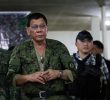DAVAO CITY — The Center for Media Freedom and Responsibility (CMFR) said that out of nine journalists killed in the country last year, “at least three were killed in the line of duty”.
The CMFR issued the statement following the 2015 Committee to Protect Journalists’ (CPJ) report which said that no journalists in the country was killed because of their work.
The CPJ in its report said: “For the first time since 2007, CPJ did not document a single journalist killed in direct relation to work in the Philippines. However, at least seven journalists were killed in unclear circumstances, and CPJ continues to investigate these cases for a work-related motive.”
The CMFR in a statement Wednesday said it establishes the motive for the killing of journalists “by looking into the work the journalist was doing, his or her reputation among his or her colleagues, whether he or she had received death threats in connection with his or her work, and interviews with the local police.”
Using these bases, CMFR said three broadcasters were killed because of their work.
Among those is Gregorio Ybañez, who was killed on August 18 last year in Tagum City. Ybañez is the president of the Davao del Norte Press and Radio-TV Club (DNPRC). He was killed 9:00 pm outside his home in Mirafuentes Subdivision.
Related story: Press club prexy shot to death
Ybañez colleagues believe his killing was connected to the conflict between the Davao del Norte Electric Cooperative under the factions of the National Electrification Administration and the Cooperative Development Authority.
Ybañez was the publisher of a weekly newspaper Kabuhayan News Services in Tagum City. He served as the director of Davao del Norte Electric Cooperative under the faction of National Electrification Administration (NEA). He also worked as a radio blocktimer in Gold FM, a local radio station in this city.
His program “Isumbong Mo Kay Ben” (Tell it to Ben) reportedly tackles pressing issues related to Daneco where he took an active and instrumental role in defending Daneco-NEA’s case in several legal disputes against its rival—the Daneco-CDA (Cooperative Development Authority) group.
CMFR said: “Although Mr. Ybañez was involved in the dispute and his use of his column constituted a conflict of interest, he was nevertheless killed for his work as a journalist.”
Meanwhile, the other two broadcasters who were killed in line of duty were Cosme Maestrado in Misamis Occidental and Teodoro Escanilla in Sorsogon.
CMFR said Maestrado survived an attempt on his life in 2011 but was killed on August 27 last year.
“Mr. Maestrado had been receiving death threats that clearly indicated that they were due to his work as a radio commentator over a local radio station. His fellow broadcasters were also certain that he was killed for his work,” said the CMFR.
Escanilla, the spokesperson of human rights group Karapatan and a chairperson of worker’s organization, Anakpawis was killed on August 19, 2015. Escanilla was also a blocktimer for his program “Pamana ng Lahi”.
“The police were unclear about the possible motive, but his colleagues suggested that his killing was due to his commentaries as well as his involvement in the labor and rights groups,” said CMFR.
“In any event, the number of journalists killed in 2015—nine—, whatever the motive, is indicative of both the state of law and order in the Philippines and of continuing impunity. That number should by itself be disturbing,” said the CMFR.
The CPJ in its report last December 29 said 17 journalists worldwide were killed in combat or crossfire.
“Five were killed on a dangerous assignment,” it said.
The CPJ also recorded that there are at least 28 journalists out of the 47 murder victims who received threats before they were killed.
“Broadcast reporter was the most dangerous job, with 25 killed. Twenty-nine victims worked online,” said the report.
According to CPJ’s report, “the most common beat covered by victims was politics, followed by war and human rights.”
Last December, members of paramilitary units who identified themselves as the Magahat Bagani group, threatened Mindanao journalists that they will be ambushed if they will cover the anniversary celebration of the Communist Party of the Philippines.
The Magahat Bagani group was identified as those responsible for the killing of tribal leaders and a school administrator in Lianga town, Surigao del Sur on September 1 last year. Residents said the group is supported by the military.
The Army has denied the accusations. An Army official said they are appealing to the public to provide them with information for the arrest of the suspects involved in the killing of the tribal leaders.(davaotoday.com)









